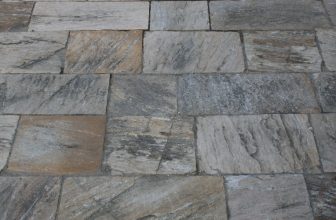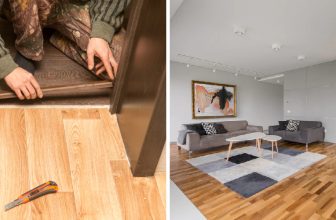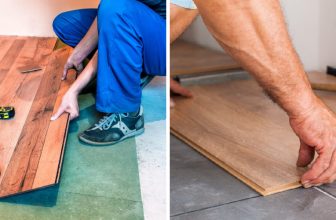How to Get Rid of Mold Under Flooring
Mold growth on or under your flooring can be a very serious problem and should not be taken lightly. In addition to causing damage to your property, it can also pose a health risk to people living in the house as mold spores can become airborne and inhaled.
If left untreated, mold will not only affect the structural integrity of the home but may even lead to disease-causing illnesses such as asthma and allergies.
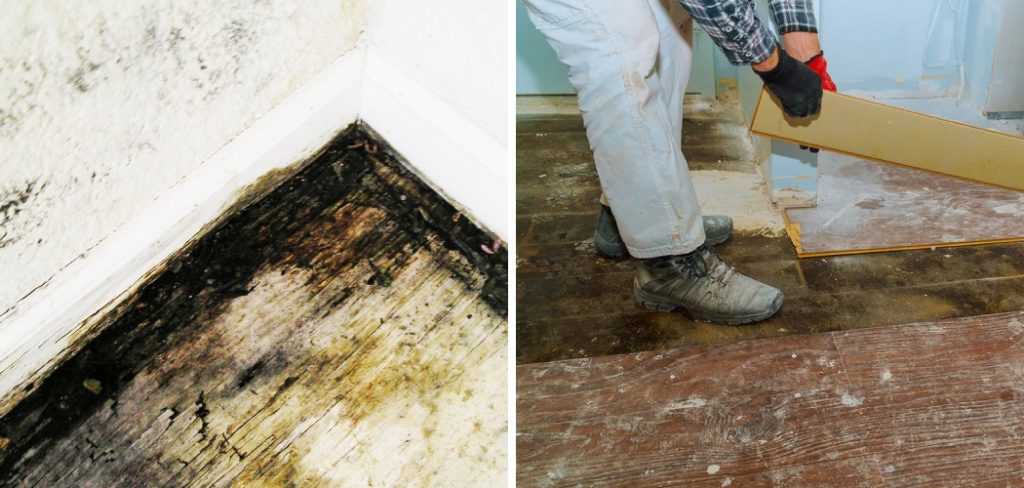
If you have noticed sources of water leakage or wetness in your home or any signs that indicate there might be an underlying moisture issue present, don’t ignore them and take action quickly by examining all visible areas for potential mold growth. Read this blog post for tips on how to get rid of mold under flooring safely and effectively!
Step-by-step Guidelines on How to Get Rid of Mold Under Flooring
Step 1: Identifying the Type of Mold
Before you begin the cleaning process, it’s essential to determine what type of mold you’re dealing with. There are various types of mold that can grow under flooring, and some are more dangerous than others.
The most common types found in households include Aspergillus, Cladosporium, Penicillium, and Stachybotrys (also known as black mold). Identifying the type of mold you have will help you take appropriate measures for removal and prevent future growth.
Step 2: Wear Protective Gear
Mold can cause severe health issues if inhaled or touched, so it’s crucial to wear protective gear throughout the entire cleaning process. This includes gloves, a mask or respirator, safety glasses, and disposable overalls. Covering your skin will protect you from coming into direct contact with the mold spores.
Step 3: Contain the Area
To prevent the spread of mold spores to other parts of your home, it’s important to contain the affected area. Close off all doors and windows leading to the room where you’ll be removing the mold, and cover any vents or ductwork to stop the spores from spreading through your HVAC system.
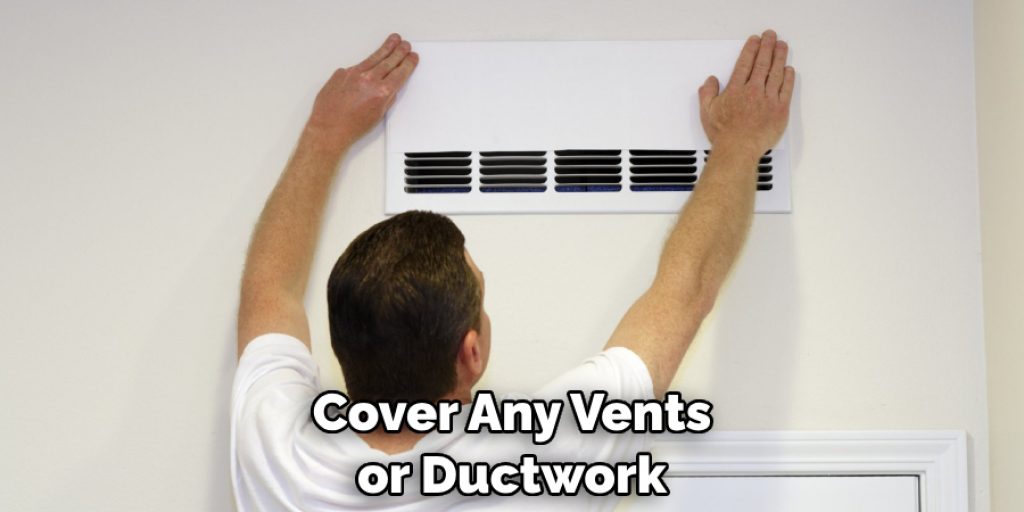
Step 4: Remove the Affected Flooring
If you have carpeting or rugs, it’s best to remove them entirely. For hard flooring such as tile or hardwood, you may need to lift a few pieces to check for mold growth underneath. In severe cases, you may need to remove some or all of the flooring material. While removing the flooring, be careful not to disturb any mold colonies as this can cause the spores to spread.
Step 5: Scrub and Disinfect
Use a mixture of warm water and detergent to scrub the affected area thoroughly. This will help to remove any visible mold growth on the surface. Once done, disinfect the area with a commercial mold cleaner or a DIY solution of bleach and water. Make sure to follow the instructions on the product carefully and use it in a well-ventilated area.
Step 6: Dry the Area
After cleaning and disinfecting, make sure to dry the area completely. Use fans or dehumidifiers to speed up the process as mold thrives in damp conditions. Drying the area will also help to prevent future mold growth. Make sure to monitor the humidity levels in your home regularly and maintain them below 50% to prevent mold growth.
Step 7: Dispose of Contaminated Materials
All materials used in the cleaning process, such as rags, sponges, and protective gear, should be disposed of properly to prevent further contamination. Seal them in a plastic bag and dispose of them in an outdoor trash bin. Before removing your protective gear, make sure to wash them thoroughly and disinfect them.
Step 8: Get Professional Help
In cases of severe mold infestation or if you have health concerns, it’s best to seek professional help. A certified mold remediation specialist will have the necessary equipment and expertise to safely remove the mold and prevent future growth.
Following these steps will help you get rid of mold under flooring effectively. However, it’s essential to address any moisture issues and take preventative measures to prevent future growth. Don’t ignore signs of mold and act quickly to protect your home and family from harmful effects of mold.
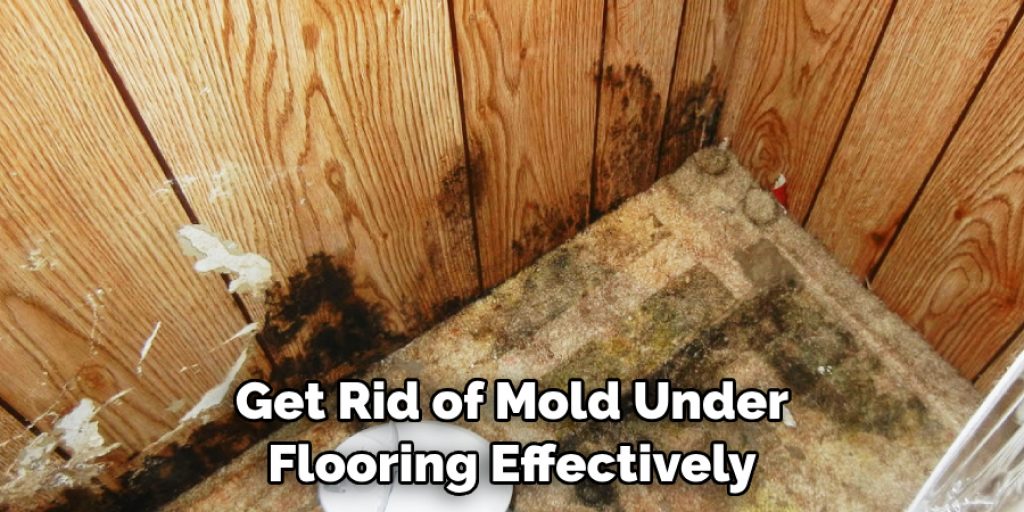
So, don’t wait until it’s too late – tackle that pesky mold problem as soon as you become aware of it! Prevention is always better than cure. Good luck! Happy cleaning!
Additional Tips and Tricks to Get Rid of Mold Under Flooring
- Use a dehumidifier in the room to reduce moisture levels and prevent mold growth.
- Regularly inspect the area under your flooring for any signs of mold, such as discoloration or musty odors.
- If you have carpeted floors, consider replacing them with hard surfaces that are easier to clean and less likely to harbor mold.
- Avoid using bleach to clean mold, as it can actually encourage further growth.
- Instead, use vinegar or hydrogen peroxide to kill mold spores and remove any stains.
- Ensure proper ventilation in the room by opening windows or using fans to circulate air.
- If you notice a persistent musty smell, consider hiring a professional mold remediation service to inspect and treat the area under your flooring.
- Regularly clean and sanitize any items stored under your flooring, as they can also contribute to mold growth.
- Keep an eye on the humidity levels in your home and use a dehumidifier if necessary to keep them between 30-50%.
- If you have a leak or water damage, address it immediately to prevent mold growth under your flooring.
- Consider using natural mold prevention methods such as essential oils or mold-resistant paints when renovating or remodeling your home.
Following these tips and tricks can help you not only get rid of mold under your flooring but also prevent it from coming back in the future. Remember to always address any moisture issues and regularly inspect and clean the area under your flooring to ensure a healthy and mold-free home.
So, these are some additional tips that you can keep in mind while dealing with mold under flooring. Stay vigilant and take preventive measures to keep your home safe and mold-free. Happy cleaning!
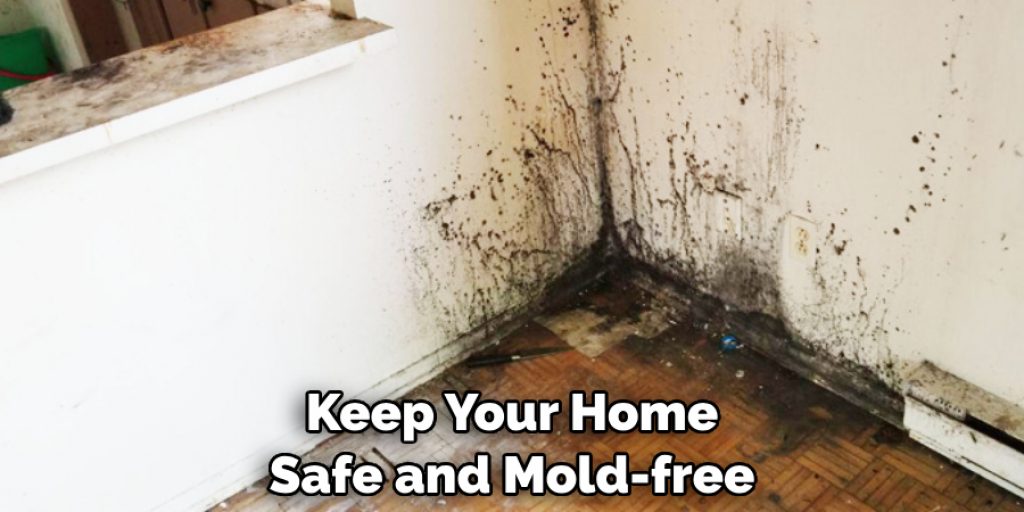
Frequently Asked Questions
How Does Mold Grow Under Flooring?
Mold grows when spores come into contact with moisture and organic material, which can be found in wood, carpet, and other flooring materials. When moisture is present, mold spores can quickly spread and grow, especially in dark areas with poor ventilation.
Can Mold Under Flooring Be Dangerous?
Yes, mold under flooring can be dangerous if left untreated. Exposure to mold can cause respiratory problems, allergies, skin irritation, and even more serious health issues. It’s important to remove mold from under flooring as soon as possible to prevent any health risks.
How Can You Prevent Mold Under Flooring?
Regularly cleaning and maintaining your flooring is the best way to prevent mold from growing underneath. It’s also important to address any leaks or moisture issues in your home immediately, as this can contribute to mold growth. Proper ventilation and the use of dehumidifiers can also help prevent mold growth.
Can I Remove Mold Under the Flooring Myself?
It is possible to remove small patches of mold under flooring yourself, but for larger areas or severe cases, it’s best to hire a professional. Make sure to wear protective gear and follow proper safety precautions when attempting to remove mold yourself.
Are There Natural Remedies for Removing Mold Under Flooring?
Yes, there are natural remedies that can help remove mold under flooring. Some options include white vinegar, baking soda, hydrogen peroxide, and tea tree oil. These substances have anti-fungal properties and can be effective in killing and removing mold. However, it’s important to note that these remedies may not completely eradicate the mold and professional assistance may still be needed.
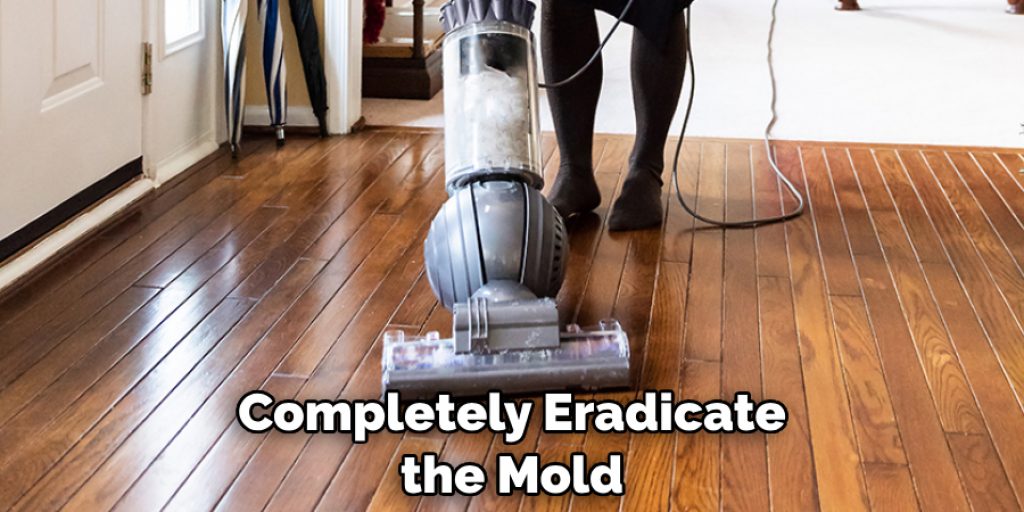
How Much Does it Cost to Remove Mold Under Flooring?
The cost of removing mold under flooring can vary depending on the extent of the mold growth and the type of flooring. On average, homeowners can expect to pay between $500-$4,000 for professional mold removal services. It’s important to get multiple quotes from reputable companies and thoroughly discuss the scope of work before hiring a professional.
Conclusion
To conclude, it is vital to take the necessary action to get rid of any mold growth as quickly as possible. Mold spores, if not immediately addressed, can cause structural damage and spread to other areas of a home. Mold growth can make living environments uncomfortable for occupants and can even be harmful to one’s health if left unchecked. Fortunately, dealing with mold under flooring is straightforward when you take the appropriate precautions.
Through proper moisture control, regular cleaning, and using suitable protective materials like sealant or paint, you can prevent future mold infestations from developing inside your home. Remember, when it comes to getting rid of mold under flooring the sooner you start working on resolving the issue the better!
Now that you are aware of how to Get Rid of Mold Under Flooring go out there and put these practices into action today so you don’t have to deal with this problem ever again!

